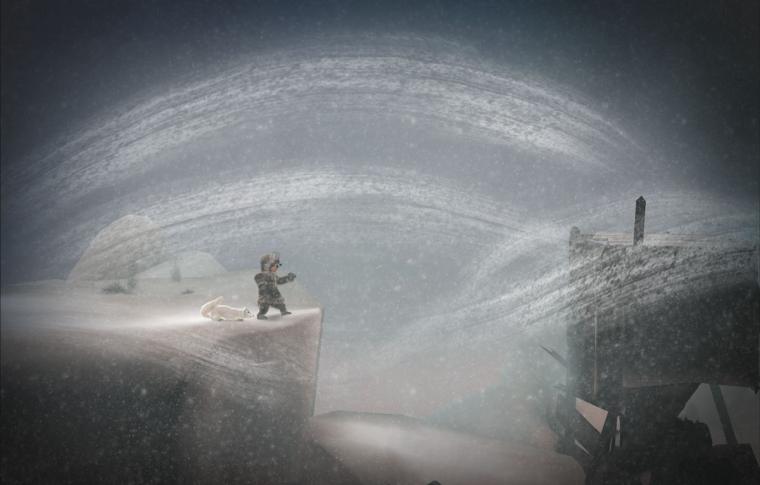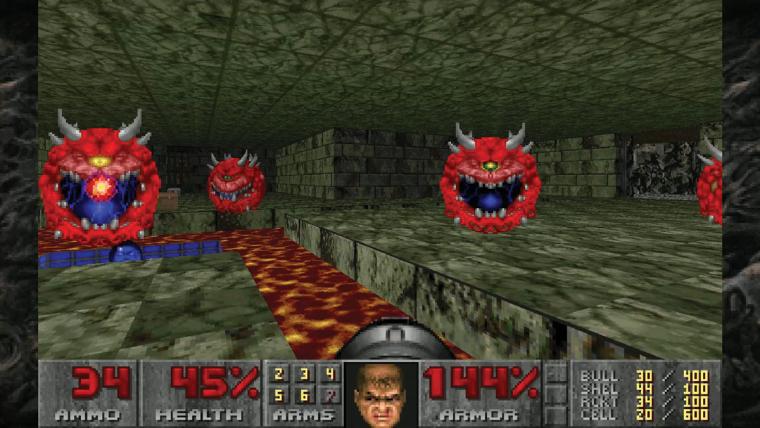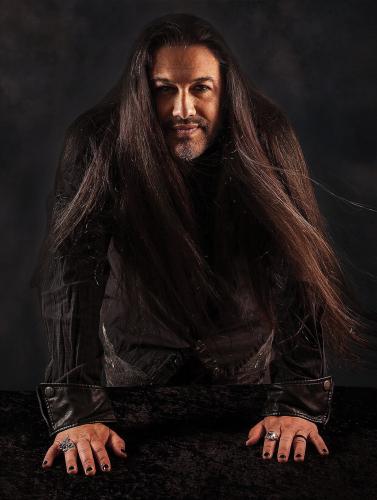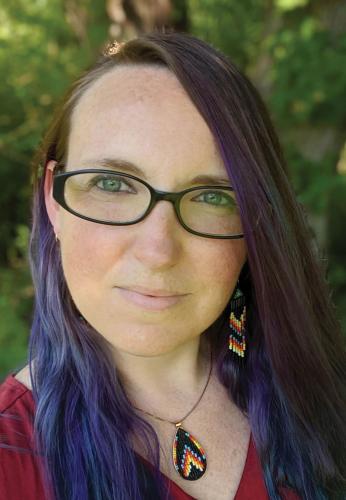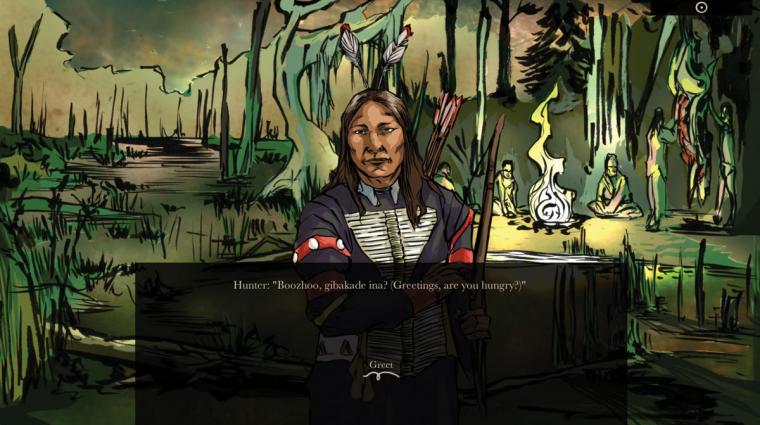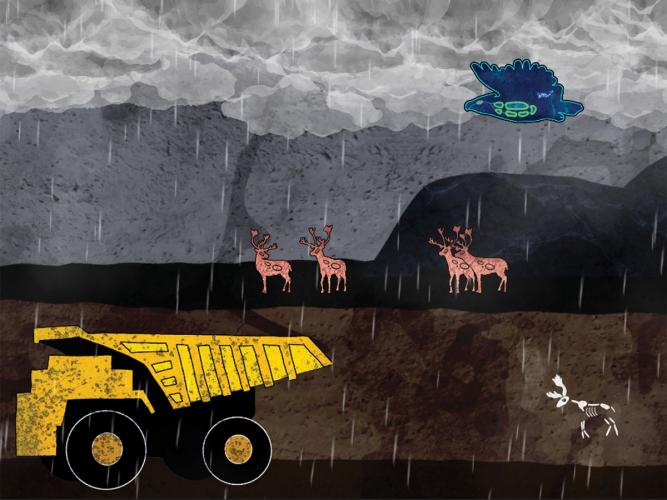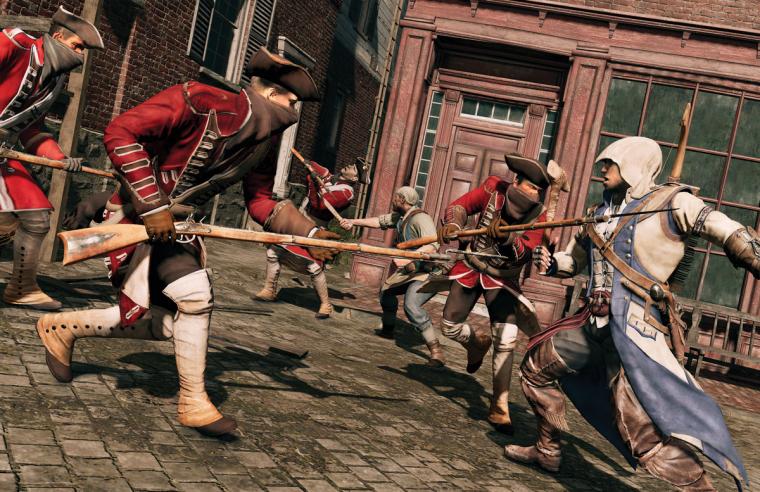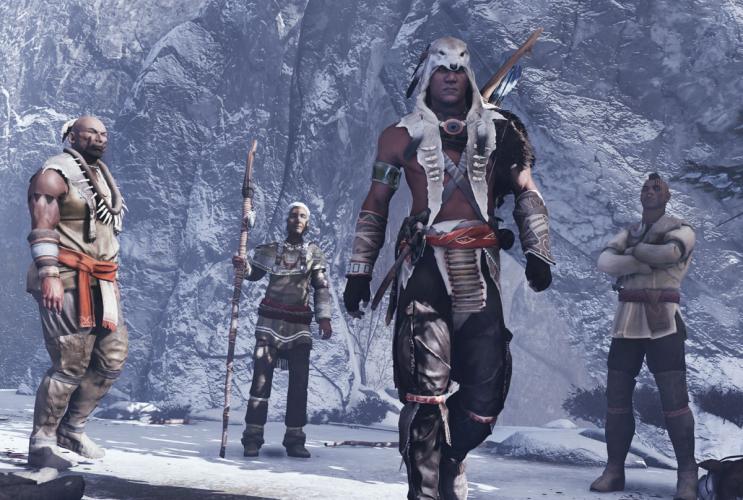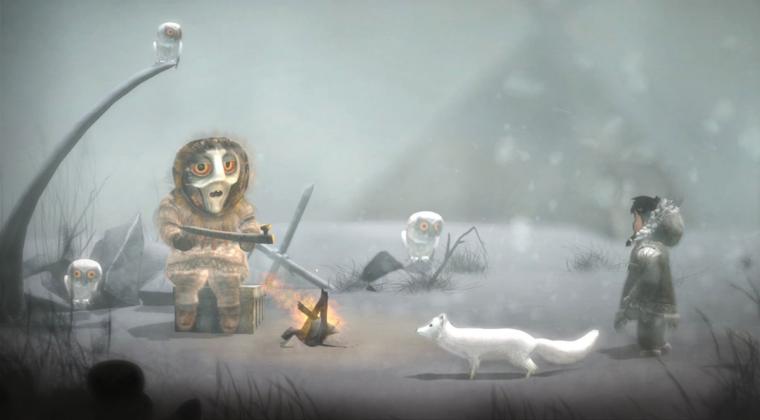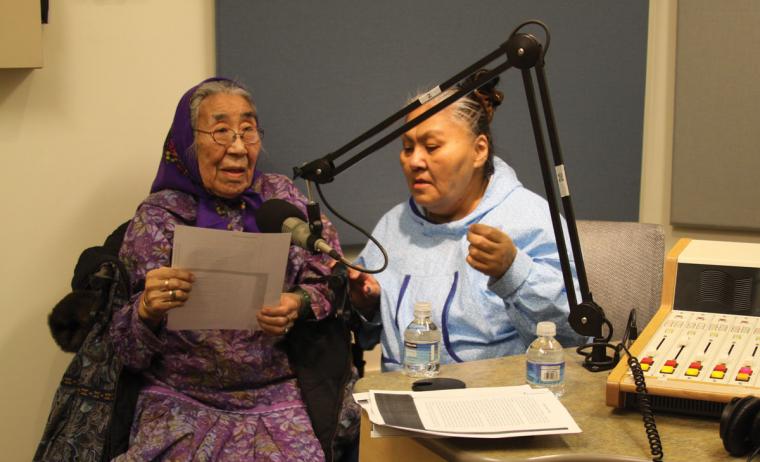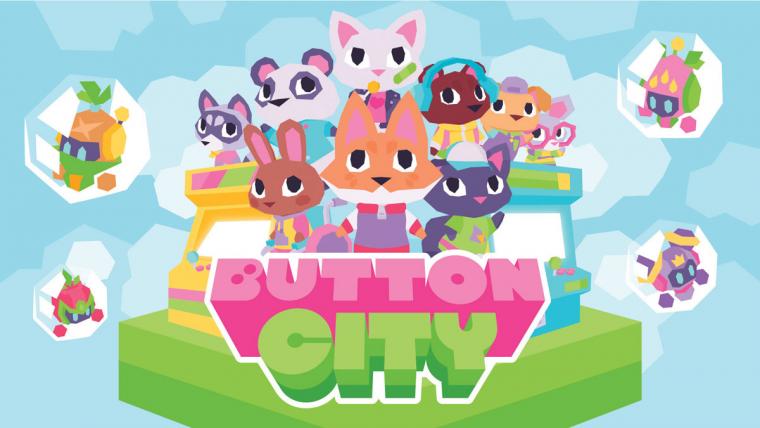On any given day, one can travel across the beautiful yet perilous landscape of Alaska. Facing icy winds, you can run from fierce polar bears and jump over snow-filled ravines. All you need to do is play “Never Alone (Kisima Ingitchuna),” a video game that allows you to explore the world of a young Iñupiat girl named Nuna and her best friend, an arctic fox.
“Never Alone” is one of several video games available today that have storylines centered around an Indigenous character or culture. Released by E-Line Media and Upper One Games in 2014, “Never Alone” is the first video game developed in collaboration with the Iñupiat. However, the journey to the creation of Indigenous-developed video games has been on a long, and sometimes bumpy, road. Not all have been culturally accurate or informed and few have included the input from Native communities.
Game Changers
John Romero, a Yaqui and Mexican video game developer, was born in 1967 and raised near the Pascua Yaqui Reservation in Arizona. He witnessed the beginnings of gaming and later became one of the world’s most influential forces in the industry.
Initially, video games were fairly simple. One of the first widely released games was “Pong,” a table tennis game in which players returned the “ball” by sliding bars up and down on the screen. Other games such as “Space Invaders,” “Pac Man,” “Donkey Kong,” “Tetris” and “Dig Dug” became wildly popular in the 1970s and 80s.
Such arcade games cost a quarter to play, and money was not always easy to come by for the young Romero. But an opportunity arose for the game enthusiast when he was 11 years old. “My brother and my friend came home one day and said that they found a place where we could play games and we didn’t have to pay for it,” said Romero. “They took me to a local college computer science building. There was one room with a mainframe filling the entire room. The other room had 25 black-and-white terminals with keyboards all hooked up to the mainframe. I started playing text games like ‘Hunt the Wumpus,’ ‘Nim,’ ‘Poison Cookie’ and very simple text things that had nothing to do with fast-action arcade games.”
Then, he learned the computer programming language known as BASIC by asking questions of the college students around him and reading coding books. Romero’s stepfather saw his son’s passion and purchased an Apple II computer for the family. The youth was hooked.
Romero worked for years on his own, creating dozens of adventure games that he still has, rescued from the original floppy discs to a hard drive. He spent several years as a programmer, helping to create such titles as “Dangerous Dave,” “Pyramids of Egypt” and “Subnodule.” Then, in 1991 he co-founded id Software LLC with fellow programmer John Carmack, game designer and creative director Tom Hall and artist Adrian Carmack.
Romero recognized that all games up to that point were two-dimensional. He became enamored with the idea of creating more of a three-dimensional virtual experience. “Every game had these hallways, and they were basically 90-degree turns,” he said. “I was trying to develop this new look, an environment no one had seen, thus creating a new world out of this technology data structure.”
While developing the game “Doom,” he programmed the ability for the user to walk through doorways, flip a switch to open a passage you can slide through and even be fired upon from above. He summoned his colleagues and showed them his creation. When they saw this new approach, he says, “it was a moment, and we knew it.” It not only changed the direction of the game but of the industry.
When id Software finally released “Doom” in 1993, it launched a new kind of video game, creating the sense of walking into another world. The team would go on to create “Doom 2,” “Heretic,” “Hexen,”and “Quake,” and other companies soon followed Romero’s three-dimensional style.
Incorporating Native Voices
Romero was one of the earliest Indigenous developers working behind the scenes in the gaming industry. Having Indigenous consultants on and characters in the stories were key ingredients to bringing authentic Native stories to the front of the video screen.
However, the earliest video games that depicted Native people were stereotypical, even offensive, and not one consulted with Indigenous people before they were released. For example, one of the first and most well-known role-playing video games was “The Oregon Trail,” which was developed in 1971 and played as a text-based game on a rudimentary computer. The players would play the role of a white settler or wagon leader who must lead a group of travelers through the Oregon Trail while avoiding dysentery, starvation and “dangerous Indians.”
Since then, an estimated 2 to 4 million games have been created for a range of platforms and devices, from the smallest app games on phones, iPhones and tablets to games played on personal computers and consoles such as Xbox and PlayStation. Players can experience action-adventures, build virtual worlds, solve mysteries or learn about a range of topics. Yet despite the plethora of game types and storylines available, only a few of today’s video games are based on culturally appropriate Indigenous themes, characters or storylines.
Elizabeth LaPensée is an assistant professor at Michigan State University specializing in the study of media and American cultures. Of Irish, Anishinaabe and Métis ancestry, LaPensée is also a game designer, writer and developer whose focus is Indigenous cultures and issues.
One of her most notable games is “When Rivers Were Trails,” a downloadable two-dimensional, point-and-click adventure game that depicts the journey of an Anishinaabe person who is displaced from the tribe’s traditional territory in Minnesota during the 1890s. She developed this game for youth of middle school age and up with a team of Indigenous professionals and support from the Indian Land Tenure Foundation and Michigan State University in 2019. The goal was to bring Indigenous cultures to classrooms. The game features Native peoples and languages from tribes spanning the regions from Minnesota to California. Also for this age group with an educational thrust is her 2017 game “Thunderbird Strike,” a two-dimensional side-scrolling game in which the main character defends the Great Lakes from potential pollution from oil pipeline leaks and spills.
LaPensée says accurate representations of Indigenous cultures and issues are vital. “It’s a responsibility.” She adds that it also can “improve the game design itself to be thinking from a Native lens or Native way of knowing. To integrate that fully into a game means you’re going to have unique forms of gameplay.”
In 2012, the video game company giant Ubisoft released “Assassin’s Creed III.” Set during the American Revolution in the late 18th century, players defend themselves against British loyalists, colonists, wolves, bears and more. The game was significant to the Native community because one of the main characters was the half-Mohawk, half-white character Connor Kenway or by his Mohawk name, Ratonhnhaké:ton.
The character speaks in the Mohawk language in the game and is voiced by Native actor Noah Watts. His mother Kaniehtí:io, or Ziio, is voiced by Mohawk actor Kaniehtiio Horn.
The company hired cultural consultants from the Kanien’kehá:ka Nation in Kahnawà:ke, Canada, including Akwiratéhka Martin, a respected Kanien’kéha language learner and teacher, and Thomas Deer, a comic book colorist who is a Haudenosaunee citizen and the cultural liaison for the Kanien’kehá:ka Onkwawén:na Raotitióhkwa Language and Cultural Center in Kahnawà:ke. The game’s developers also recorded children speaking the Mohawk language at one of the community’s immersion schools and songs sung by a local traditional singing society.
“They involved our community in the project, which gave the project more strength and legitimacy.” Deer said. “Overall, I am proud of my contribution to the game and how much it was embraced by our people.”
By February 2013, Ubisoft announced they had sold more than 12 million copies worldwide. The game also received several Game of the Year and Game Developer’s Choice awards.
“What I love about this game and is cool is that [the main character] makes offerings when he kills animals. That’s a mechanic that’s built into the design that was brand new,” LaPensée said. “That was because Mohawk people were involved, and they were asking themselves, ‘How can this character be more genuinely Mohawk?’ It was not just about, ‘Hey, we’re going to use your language and your regalia,’ They took a pause and really looked at what they were doing and made revisions all throughout.”
Another game that uses a Native language is “Tipi Kaga” (Tipi Builder in Lakota). In May of 2019, Olympic gold medalist and Lakota Billy Mills awarded each of 10 Native youth $10,000 as part of Mills’ Running Strong for American Indian Youth program. Among the grantees was Carl Petersen, a citizen of the Oohenumpa Lakota Band of the Cheyenne River Sioux Tribe.
Petersen, armed with a degree in computer design, had started his own video game developing company called Northern Plains Games to develop “Tipi Kaga.” With the grant, he completed the game in 2021, incorporating text written in both English and Lakota.
Petersen said he loved producing his own game. Yet when he also was able to serve as a writer on “When Rivers Were Trails” in 2019 with an all-Indigenous team, he found the experience both rewarding and freeing. “I really loved working on that game because the people who were actually putting it together put in the hard work, put the funding together and put the team together.”
Expanding the Native Gaming Landscape
More and more games centered around Native culture and stories are being offered on a number of different platforms for a wide range of age groups. For example, “Button City” is a multiworld action game for all ages. It was released in 2014 by Shandiin Woodward, a Diné game developer who has a company called Subliminal games. Woodward’s inspiration comes from her heritage. “I come from a long line of artists. My grandmother was a weaver and my mother is a painter,” she said, “I learned everything I know about art from them, and even though I chose to work in a different medium, I honor my heritage and my family by creating beauty through video games.”
“The Raven and the Light” is a horror game based on the fictional Indian boarding school called “Mother Mary’s Residential School for Indian Students.” It was created in 2015 for an adult audience by Mark Basedow, a developer who had researched what he called “Canada’s dark past”—government agents removing First Nations children from their families. The game is for mature players due to its sensitive themes and potentially disturbing content.
“Terra Nova,” released by Maize Longboat in 2019, is a two-player cooperative game that “explores what first contact between Indigenous and Settler peoples might look like thousands of years from now.” The game won “Best Emerging Digital or Interactive Work” at the imagineNATIVE Film and Media Arts Festival in 2019.
Romero’s latest game “Empire of Sin” was released on December 1, 2020. Its story involves a Cree and a Navajo character who speak their Native languages.
Yet, the gaming industry still has a long road ahead toward producing games that not only are culturally appropriate but also respect the value of consulting and including Indigenous voices, writers and artists.
For example, Deer said that he and the other Indigenous consultants on “Assassin’s Creed III” could have had provided more input on the product. “I felt that I was only being asked to alert them of possibly offensive components in the game rather than openly contributing to the overall creative process of the project,” he said. “Part of that was my inexperience in working in the video game industry. Had I known the leverage I probably had as a cultural consultant, I could have been more assertive in insisting on a bigger role in the creative process rather than acting as a cultural scrutineer.”
On some projects, when Peterson asked developers if they would consult with Native people, many companies said they would but that they wouldn’t pay them. “Video games that rip off our stuff are hurtful,” he says. “It is very negative, both to the Native game design community and to the Native community as a whole.”
Romero also acknowledges that budding Native developers, artists and writers will find challenges in entering the industry. “You need to find the right environment, the right studio for you. A lot of times that’s an indie studio because it’s a group of people that all know each other,” says Romero.
However, LaPensée said players and members of the gaming industry have had a growing interest in including Native people in games, not only as characters in the stories but “into the design, the music and sounds, and art and all aspects.”
Ishmael Hope, a Inupiaq/Tlingit game developer and poet, who was a writer for “Never Alone” says being acknowledged for his abilities is as important to him as for Native cultures to be accurately depicted. “Good writing and good art matter,” he said. “I want all of my work to be rigorous, well-researched, well-considered. I tend to my craft at all times. I often get opportunities because people are interested in ‘accurate representation,’ but I want more. I want to be valued for the quality of my work.”
Deer said he is seeing more Indigenous developers and storytellers entering the gaming world. “The talent for that potential certainly exists amongst Onkwehón:we [original] people, and I believe it’s only a matter of time before Indigenous video game developers find one another and endeavor to create something that can rise to the levels of any high-tier video game franchise. Now, more than ever, we see Onkwehón:we creators emerging in the film industry, music, comic books, etc.” he says. “The common thread here is storytelling, which is a prevalent attribute in Onkwehón:we cultures. Video games will be the next platform for Indigenous storytelling.”

